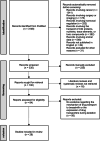A literature review of drug transport mechanisms during lactation
- PMID: 38973229
- PMCID: PMC11578134
- DOI: 10.1002/psp4.13195
A literature review of drug transport mechanisms during lactation
Abstract
Despite the benefits of breastfeeding, lactating mothers who take prescribed medications may discontinue breastfeeding due to concerns associated with infant drug exposure in breastmilk. Consolidating the current knowledge of drug transport to breastmilk may inform understanding of the safety of medication use during lactation. This literature review summarizes the mechanisms of drug transport to breastmilk, details the physicochemical drug properties that may alter the extent of passive transport, and describes the expressional changes in mammary drug transporters that may affect active transport. During the period of 20 July 2023 to 11 August 2023, PubMed® was searched to identify journal articles pertinent to the mechanisms of drug transport from maternal plasma to breastmilk and the expression of mammary drug transporters during lactation. From the 28 studies included in this review, four mechanisms were identified for transporting drugs from maternal plasma to breastmilk: passive transport, active transport, lipid co-transport, and transcytosis. The lactational expression of 20 drug transporters was further summarized, with 9 transporters demonstrating downregulated expression during lactation and 11 transporters demonstrating upregulated expression during lactation. Understanding the mechanisms of drug transport to breastmilk may aid in estimating infant drug exposure, developing physiologically based pharmacokinetic (PBPK) models that describe drug transfer, and initiating clinical drug development programs in the lactating population.
© 2024 The Author(s). CPT: Pharmacometrics & Systems Pharmacology published by Wiley Periodicals LLC on behalf of American Society for Clinical Pharmacology and Therapeutics.
Conflict of interest statement
C.G. completed a summer internship that was funded by AstraZeneca. L.N.B. and D.W.B. are full‐time employees and shareholders of AstraZeneca. P.C. was an employee of AstraZeneca when this work was conducted, and she is currently an employee of Certara.
Figures


Similar articles
-
Transporters and drug secretion into human breast milk.Expert Opin Drug Metab Toxicol. 2025 Apr;21(4):409-428. doi: 10.1080/17425255.2025.2461479. Epub 2025 Feb 7. Expert Opin Drug Metab Toxicol. 2025. PMID: 39893560 Review.
-
Drugs in Lactation.Semin Perinatol. 2025 Jun;49(4):152077. doi: 10.1016/j.semperi.2025.152077. Epub 2025 Apr 2. Semin Perinatol. 2025. PMID: 40175218 Review.
-
A comprehensive review on non-clinical methods to study transfer of medication into breast milk - A contribution from the ConcePTION project.Biomed Pharmacother. 2021 Apr;136:111038. doi: 10.1016/j.biopha.2020.111038. Epub 2021 Jan 30. Biomed Pharmacother. 2021. PMID: 33526310 Review.
-
Non-clinical Models to Determine Drug Passage into Human Breast Milk.Curr Pharm Des. 2019;25(5):534-548. doi: 10.2174/1381612825666190320165904. Curr Pharm Des. 2019. PMID: 30894104 Review.
-
A close examination of BCRP's role in lactation and methods for predicting drug distribution into milk.CPT Pharmacometrics Syst Pharmacol. 2024 Nov;13(11):1856-1869. doi: 10.1002/psp4.13243. Epub 2024 Sep 18. CPT Pharmacometrics Syst Pharmacol. 2024. PMID: 39292199 Free PMC article. Review.
Cited by
-
Recent applications of pharmacometrics and systems pharmacology approaches to improve and optimize drug therapy for pregnant and lactating women.CPT Pharmacometrics Syst Pharmacol. 2024 Nov;13(11):1815-1819. doi: 10.1002/psp4.13269. Epub 2024 Nov 18. CPT Pharmacometrics Syst Pharmacol. 2024. PMID: 39552441 Free PMC article. No abstract available.
-
Evaluation of mathematical models for predicting medicine distribution into breastmilk - considering biological heterogeneity.Front Pharmacol. 2024 Nov 29;15:1507551. doi: 10.3389/fphar.2024.1507551. eCollection 2024. Front Pharmacol. 2024. PMID: 39679374 Free PMC article.
-
Safety and Risks of Antihypertensive Medications During Breastfeeding: A Review of Current Guidelines.J Clin Med. 2025 May 26;14(11):3722. doi: 10.3390/jcm14113722. J Clin Med. 2025. PMID: 40507483 Free PMC article. Review.
-
Transporters and drug secretion into human breast milk.Expert Opin Drug Metab Toxicol. 2025 Apr;21(4):409-428. doi: 10.1080/17425255.2025.2461479. Epub 2025 Feb 7. Expert Opin Drug Metab Toxicol. 2025. PMID: 39893560 Review.
-
Drug Safety During Breastfeeding: A Comparative Analysis of FDA Adverse Event Reports and LactMed®.Pharmaceuticals (Basel). 2024 Dec 9;17(12):1654. doi: 10.3390/ph17121654. Pharmaceuticals (Basel). 2024. PMID: 39770496 Free PMC article.
References
Publication types
MeSH terms
Substances
Grants and funding
LinkOut - more resources
Full Text Sources
Medical

